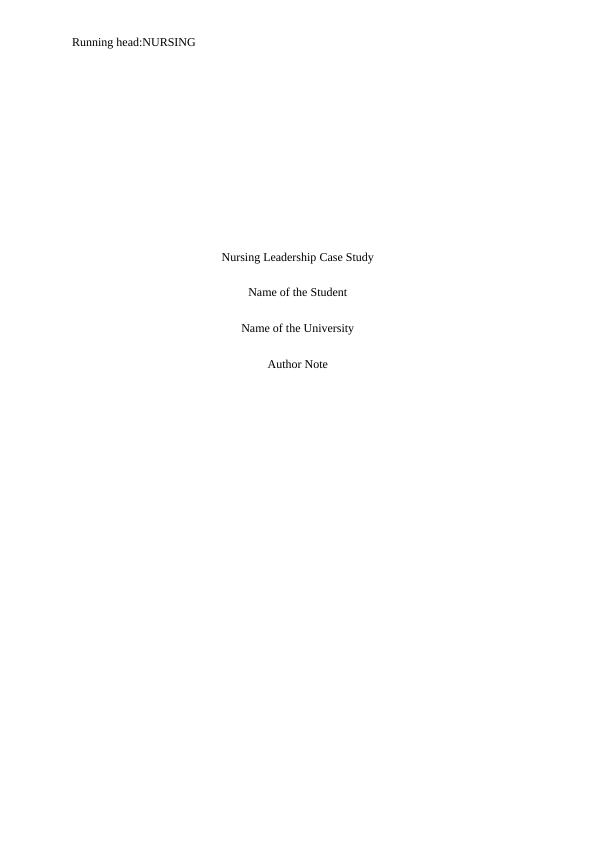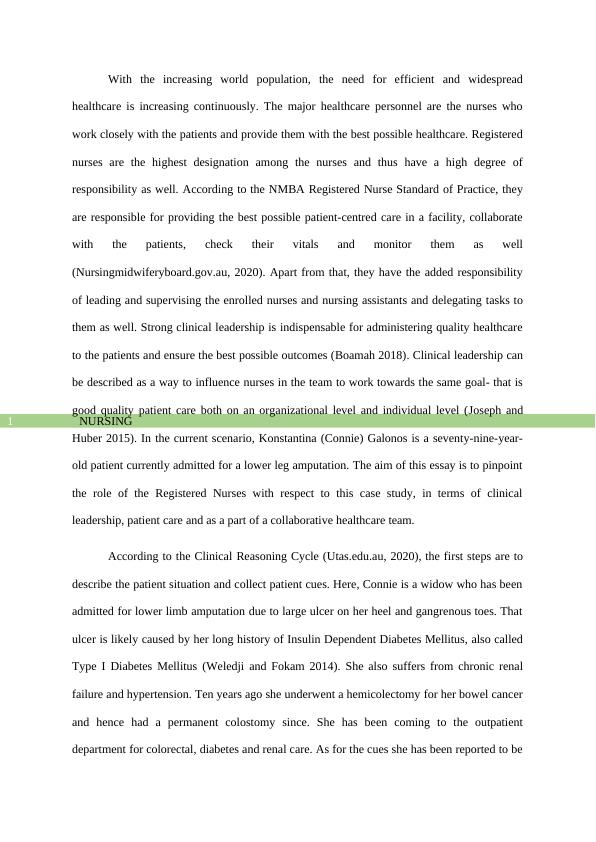Nursing Leadership Case Study 2022
Submit an academic essay discussing the role of the registered Nurse in a collaborative healthcare team and how they can influence patient outcomes.
9 Pages2839 Words36 Views
Added on 2022-09-22
Nursing Leadership Case Study 2022
Submit an academic essay discussing the role of the registered Nurse in a collaborative healthcare team and how they can influence patient outcomes.
Added on 2022-09-22
ShareRelated Documents
End of preview
Want to access all the pages? Upload your documents or become a member.
The postoperative education prior of after the rehabilitation
|11
|2836
|27
HealthCare : Multidisciplinary Team Case Study
|9
|2952
|32
Evidence-Based Care on Diabetic Foot Ulcers
|9
|2226
|342
The clinical nurse leader
|11
|3285
|20
Diabetic Foot Ulcer: Pathophysiology, Nursing Care, and Management
|11
|2986
|74
Nursing Assignment: Clinical Reasoning
|9
|2486
|338



